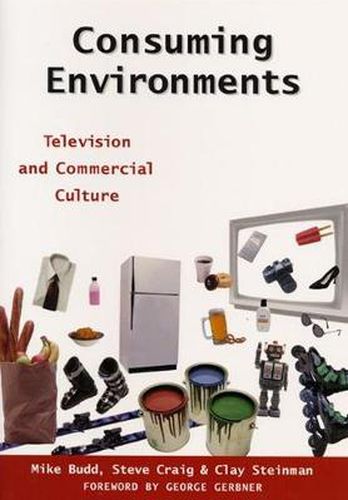Readings Newsletter
Become a Readings Member to make your shopping experience even easier.
Sign in or sign up for free!
You’re not far away from qualifying for FREE standard shipping within Australia
You’ve qualified for FREE standard shipping within Australia
The cart is loading…






This is an exploration of how much TV people watch, why they watch too much, and what they see. The authors argue that while people may have good reasons for watching television, they seem to be unaware that such habits might be harmful to their environmental health. The book examines how advertising and media companies have shaped the commercial content of most television, tracing industry motives and operations and their increasing concentration in fewer hands. Intended for readers concerned about the impact of media on the environment as well as those interested in critical studies of television, this work combines close analyses of television as an industry with perspectives drawn from environmentalist, feminist and multicultural studies. Using detailed examples illustrated with images from actual commercials, news broadcasts and television shows, the authors demonstrate how ads and programmes are put together in complex ways invisible to viewers. They argue that television’s appeal requires its methods to remain hidden so that viewers believe they control their response to and the meaning of what they watch. They place contemporary television in historical context - from its roots in department store windows to its future in the new media environment - and they offer specific ways to counteract the effects of TV and overconsumption’s assault on the environment.
$9.00 standard shipping within Australia
FREE standard shipping within Australia for orders over $100.00
Express & International shipping calculated at checkout
This is an exploration of how much TV people watch, why they watch too much, and what they see. The authors argue that while people may have good reasons for watching television, they seem to be unaware that such habits might be harmful to their environmental health. The book examines how advertising and media companies have shaped the commercial content of most television, tracing industry motives and operations and their increasing concentration in fewer hands. Intended for readers concerned about the impact of media on the environment as well as those interested in critical studies of television, this work combines close analyses of television as an industry with perspectives drawn from environmentalist, feminist and multicultural studies. Using detailed examples illustrated with images from actual commercials, news broadcasts and television shows, the authors demonstrate how ads and programmes are put together in complex ways invisible to viewers. They argue that television’s appeal requires its methods to remain hidden so that viewers believe they control their response to and the meaning of what they watch. They place contemporary television in historical context - from its roots in department store windows to its future in the new media environment - and they offer specific ways to counteract the effects of TV and overconsumption’s assault on the environment.